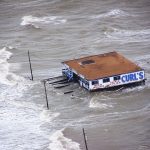 By Jeanne Yocum
By Jeanne Yocum
Disasters come in many forms from the physical to the cyber, but one thing is true in every case and that is that your business needs a recovery plan. The plan you put into place should be comprehensive and should address every foreseeable situation. In addition to the increased threat of data theft, more volatile weather patterns also put businesses in physical danger. Hurricanes, tornadoes, earthquakes, and fires are just some of the disasters that can affect your business. All of these – along with many other potential hazards – require that you do advanced planning to assure that you’re prepared to make your business recovery as quick and smooth as possible.
What does a business continuity and disaster recovery plan entail? To begin, you should address issues concerning your data storage and online presence. If you make use of cloud computing, your service provider likely offers a method of compiling a secondary storage option, which is separate from your primary account. You should make use of this to ensure you still have access to your records.
[amazon_link asins=’B001UV4VZS’ template=’ProductAd’ store=’succeedingi0d-20′ marketplace=’US’ link_id=’9e9ce93a-e42b-11e8-8a51-7534b2d1571b’]Have a team ready to go
Additionally, you should assign a recovery team to respond to a data breach. These individuals, who will either be your own employees or contracted through a data recovery service, will ensure access to breached data is limited. This means changing passwords and ensuring all employees also change their passwords. They should also check the company’s website and social media accounts to ensure those resources are also safe. It will also be important to notify customers, vendors, and partners about the breach.
When a physical disaster strikes, it’s important to evaluate the damage to your building first. If there’s damage to the exterior or the roof, this may result in leaks that can cause additional damage to products or equipment. You should also have a plan in place to repair or replace computers, peripherals, and other machinery. Your disaster recovery plan should take into account the necessity of replacing software and files that may only be stored on your in-house computers and servers.
[amazon_link asins=’B071X9WTBK’ template=’ProductAd’ store=’succeedingi0d-20′ marketplace=’US’ link_id=’a8325eba-e42b-11e8-af60-0105ecef859d’]Make sure you also have a plan in place to alert customers to what has occurred. Provide honest information about how you’re going to serve their needs until things are back in order. Also reach out to vendors who may be impacted by any temporary slowdown in your operations.
Even taking care of simple tasks in advance can help speed things along. Let’s say a disaster occurs after hours and you have to notify all your employees. Having a phone tree set up that delegates some of this responsibility to others will speed this notification process so you it’s not all on your shoulders and nobody has to spend time looking up phone numbers.
These are just a few tips that can help you recover from a disaster quickly. In order to develop a more comprehensive plan, you should enlist the help of a disaster recovery consultant. A professional can help you formulate a strategy that will minimize the downtime your business experiences after a disaster.
